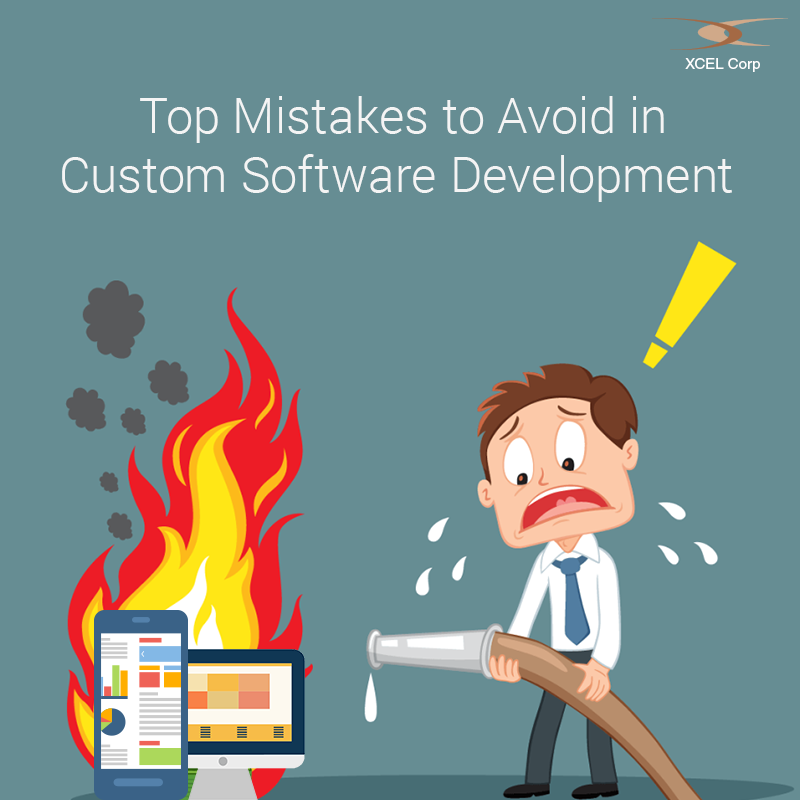Custom Software development is thought to have lost its sheen in recent days. Many believe that there are more than enough software that are readily available so there is no need for custom made software anymore. Even if the software that is bought does not fit your requirements, they could be customized to accommodate your needs and functionalities. Still, people do choose to get custom made software.
There are many reasons why people use custom software development and it has many advantages as well. Some of the most important advantages of custom built software include, increased freedom, addressing all your needs, better integration, easier adaptability, increases competitive advantage, and finally cost effective on the longer run.
But your custom built software has more chances of failing compared to regular software that is bought because it is custom made for your organization and your solution provider might not be able to understand your challenges. Custom software development projects are expensive in terms of money and time and mistakes are not affordable.
One way of avoiding mistakes would be by understanding why these mistakes are made. From our experience in custom software development, we at XCEL Corp have compiled a list of 5 most common errors which cause custom software development projects to fail.
1. Working Without Strategy:
This is happens with both new start ups and large established software development giants. It could be because of the lack of experience in the former and too much confidence in the latter. Both of them are wrong as it defeats the purpose of custom software development. A good custom software developer would establish good communication with the client and understand the requirements including
• Primary goal for the custom software
• Feature requirements
• Processes that need to be integrated
• Business goals of the organization
• Maintenance of code and databases
• Inputs from the end users
• Knowing who the stake holders are in the organization
Understanding these basic requirements and inputs from the organization and its end users, the developer would then provide a detail project plan. The project plan would include delivery timelines, significant landmarks, integration plan, and finally training. Without strategy, you will not be able to accomplish anything with your custom developed software.
2. Treating it as a Product:
Many organizations consider custom developed software as a product and try to haggle over delivery times, functionalities, features, price, etc. This is ok if you are purchasing software from someone’s inventory and only has to be implemented in organization. If this is what you would require, then you shouldn’t choose custom software in the first place. Custom software development is only for those who don’t believe in inventory products and expect something out of the box and suits their needs perfectly.
When the procurement department of an organization fails to understand this, there will be complications between the organization and the developer. These complications will further escalate to a point where there is no positive activity in software development and the entire project would fail.
3. Unchecked Scope Creep:
Scope creep is a major threat to all projects especially in IT. It is one of the most common mistakes which cause custom software development projects to fail. When custom software development takes place in the agile process, there could be number of iterations which could change the purpose of the software. One easy way to avoid this mistake would be to establish a Minimum Viable Product early on and work towards getting that MVP as early as possible.
When iterations are being made, the developer should inform the stakeholders on how the iterations would affect the development and how different it would be from the MVP that was first established. Some organizations would push for changes even when there is no absolute need which again will cause the development to staff significantly.
4. Improper Management of Risk:
However great your custom software developer may be, there are still many chances for bugs and glitches to happen. A good custom software developer will have contingency plan for risk management and risk mitigation. Without a proper risk management plan in place, it would lead to severe downtime in development which would also affect delivery timelines.
Not paying importance to risk management would also lead to added costs and unforeseen expenses which could be frustrating for the stakeholders. This has at many times led custom software development projects to be completely scrapped.
5. Choosing by cost and not value:
In custom software development, many choose the provider who offers the lowest per hour cost. But this is certainly not the way to choose a service provider. A custom software developer contributes to much more than working on a hourly basis. You should understand the value their work lends to your organization. Some even say “you get what you pay for”, while this is true, that is still not the way to choose your service provider.
One way to decide on the pricing of custom software is to judge by the ROI estimates. A cheap custom made software might provide you with a lesser ROI while compared with a more expensive software that delivers a greater ROI. So it totally depends on what your budget is and what ROI you are looking to achieve.
XCEL Corp has over 15 years of experience in providing custom software development. From enterprise applications, big data, data warehousing, to enterprise mobility, ERP, and CRM, custom software development services by XCEL Corp has empowered numerous organizations to be more efficient and beat their competition with ease.
If you are looking for state of the art custom software development, contact XCEL Corp today!

Bhavani Suri ( Content Writer)
Our in-house content writer, who develops and creates content marketing strategies. She writes about the latest trends and advances related to IT in particular, and Technology in general.



 2020 is the year of forward thinkers that has put the world on the threshold of emerging technologies, which will soon be implemented in the near…
2020 is the year of forward thinkers that has put the world on the threshold of emerging technologies, which will soon be implemented in the near…